



Bhendi Bazaar is known for its iftars and Ramzan food walks. It is also known for old buildings with tiled roofs, rounded corners, balustrades and balconies, which allowed a peep into life unfolding within the tightly packed quarters - because tightly packed they were, with tiny crisscrossing gullies, houses, eateries and shops selling myriad things jammed against each other.
In 2009, the Saifee Burhani Upliftment Trust (SBUT) launched one of the largest urban renewal projects. The Rs 4,000 crore Bhendi Bazaar Cluster Redevelopment Project, pre-certified a ‘Gold’ grade by the Indian Green Buildings Council, will transform a 200-year-old South Bombay neighbourhood, sprawled over 16.5 acres on which stand 250 buildings that house 3,200 families and 1,250 shops.
The first phase of the project is complete. The two dusty-yellow Al-Sa'adah towers dominate the chaotic landscape of chawls (a community-living housing system) and ‘vertical slums’ (new-age towers that have replaced the older buildings, without creating any open spaces or social infrastructure).
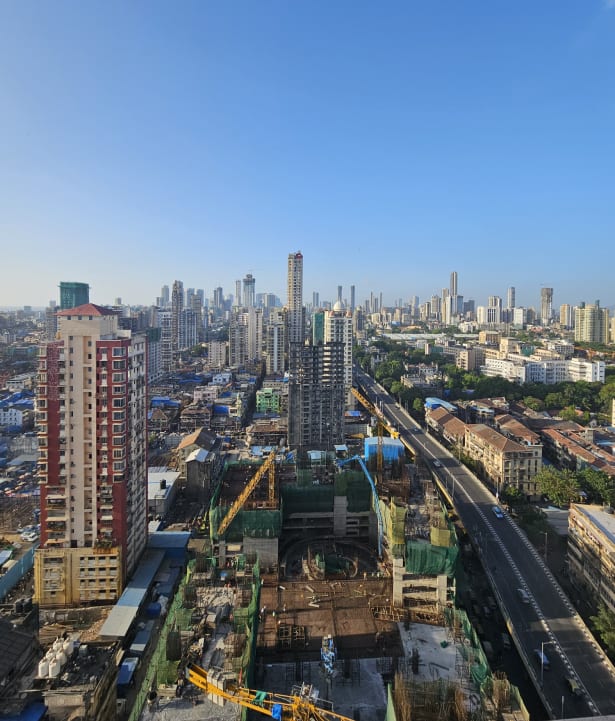 The view from a top floor. (Photo by Deepali Nandwani)The modern towers
The view from a top floor. (Photo by Deepali Nandwani)The modern towersTo show me how much change the transformation will bring, SBUT’s Murtaza Sadriwala and his team whiz me up to one of the top floors in the Al-Sa'adah towers, which opens to a cantilevered podium with a garden, a fountain and a play area for kids. From here, to my left is the rest of South Bombay, and to my right is Mohammed Ali and Nagpada. The view skims over the BDD chawls next door, another old Mumbai real estate icon, the Arabian Sea, and the dome of the Saifee Masjid close by. The building’s alignment with progressively increasing height provides inhabitants with enough natural light and a light coastal breeze.
The Al-Sa'adah complex houses shopping and entertainment facilities for 600-odd families. Sadriwala says, “For most of their life, residents had lived in one-room-kitchen homes. Often, the staircase joining the floors was broken to such an extent that they had to swing down to the road below, using ropes tied to the common balcony. They shared a common bathroom. In the towers, they enjoy 24-hour electricity and water supply, and well-separated spaces.”
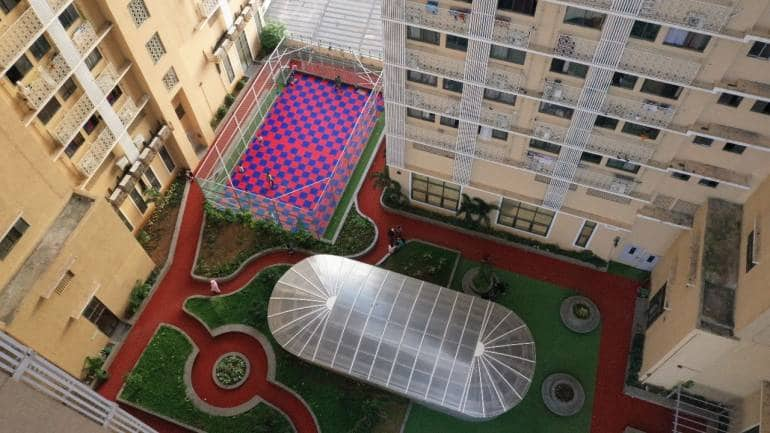 The Al-Sa'adah complex has shopping and entertainment facilities for 600-odd families.Mumbai’s inner-city underbelly
The Al-Sa'adah complex has shopping and entertainment facilities for 600-odd families.Mumbai’s inner-city underbellyBhendi Bazaar was part of the inner-city areas developed to cater to the housing needs of single men, who powered Bombay’s (as Mumbai was known then) trading hubs and the harbour of Old Bombay.
The British referenced the area as ‘Behind the Bazaar’ (the bazaar being Crawford Market), which was then Indianzed to Bhendi Bazaar. The buildings and chawls were a testament to the unique cultural and architectural legacy of the communities who settled here, a vibrant mix of Dawoodi Bohra, Memons, Gujarati, Sindhi, Parsi and Kutchi.
Things spiralled out of control when entire families slowly shifted to these chawls, forging friendships and family ties, but also putting pressure on the infrastructure.
The project was a dream of the late Syedna Mohammed Burhanuddin, the former spiritual leader of the Bohra Muslim community who settled Bhendi Bazaar, says Sadriwala. “In 2008, the government of Maharashtra amended the Cluster Development Policy. We initiated the renewal project in 2009, and began construction of the first two towers in 2016, after acquiring letters of intent from the residents and moving them out of here.”
Once the project is complete, it is likely to be a beacon of how even the densest areas can be reconstructed sustainably with 18-metre wide roads, modern infrastructure, open spaces and well-connected commercial areas.
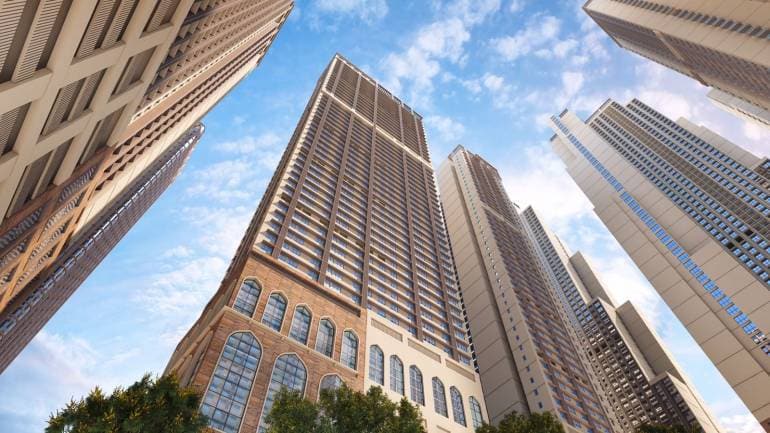 The constriction of the towers began in 2016.Modern meets traditional
The constriction of the towers began in 2016.Modern meets traditionalUnlike most faceless towers, the architects have ensured that local culture and architecture are dovetailed into the neighbourhood. The towers have arches, latticework and jharokha-grilles, some of which cover portions of windows, allowing clotheslines to be masked. The facade is clad in Malad stone or yellow basalt, native to Mumbai and used in several neo-Gothic heritage buildings built by the British.
The people-centric redevelopment project has offered larger spaces to occupants — 350 sq ft homes at the minimum, as opposed to the 300 sq ft space mandated by the government. “Even those tenants who lived in 60 sq ft spaces below a building’s staircase have received 350 sq ft homes,” says Sadriwala.
The second phase of the redevelopment project, Sector 6 (Al-Ezz) and Sector 4 (An-Nasr), will evoke similar elements and subtle variations in the scale and form of the arches, says Sadriwala. “They may be connected to the first two towers by an aero bridge, so shoppers can walk from one phase to another without having to step down.”
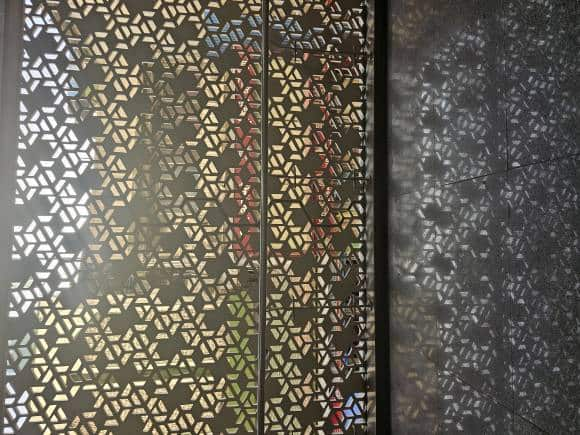 The towers have arches, latticework and jharokha-grilles.The Bazaar
The towers have arches, latticework and jharokha-grilles.The BazaarBhendi Bazaar was a unique shopping experience, with most stores selling everything from foam to garments. The stores are located at street level, so people can shop on the way home. Now many are housed on the first level of the towers. Was there any apprehension about losing business?
“Yes,” says Sadriwala. “But we have to educate. Don’t people go to the second and third levels of a mall? People will get used to this, too.”
To help, SBUT and the architects have placed signage depicting the location of the shops.
What has worked in favour of Bhendi Bazaar is its unique redevelopment plan that turned the gaze within, to the culture and architecture of the neighbourhood, instead of Shanghai and Singapore, a comparison that has sunk many such urban renewal projects.
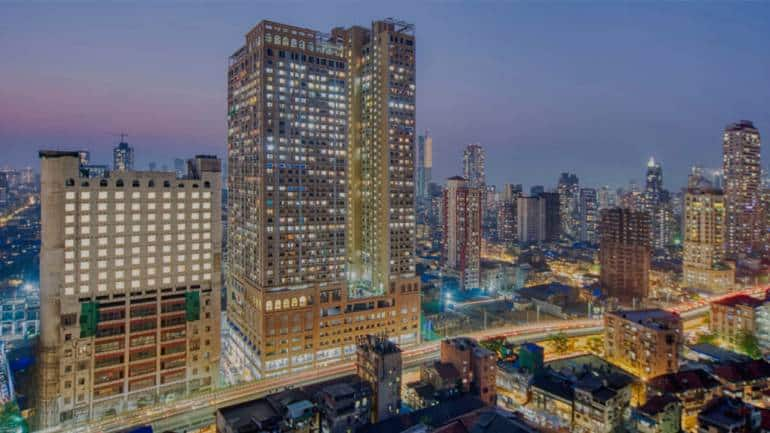 Bhendi Bazaar Cluster Redevelopment Project.
Bhendi Bazaar Cluster Redevelopment Project. Discover the latest Business News, Sensex, and Nifty updates. Obtain Personal Finance insights, tax queries, and expert opinions on Moneycontrol or download the Moneycontrol App to stay updated!
Find the best of Al News in one place, specially curated for you every weekend.
Stay on top of the latest tech trends and biggest startup news.